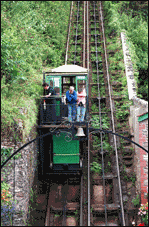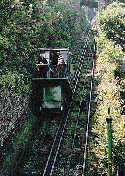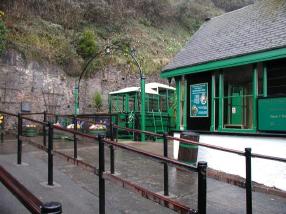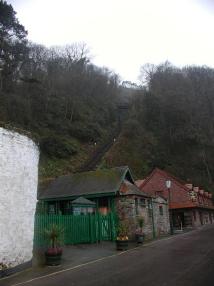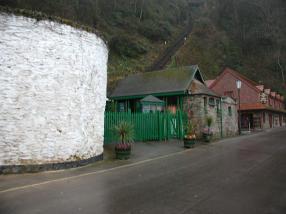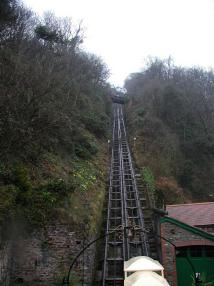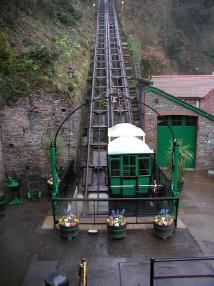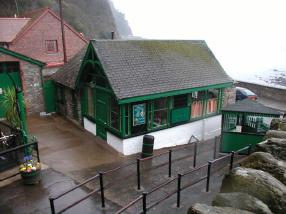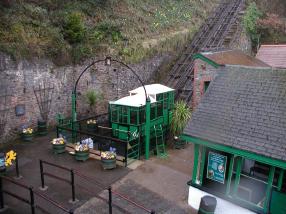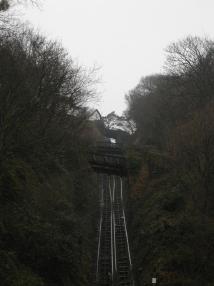Lynton and Lynmouth Cliff Railway
History
This railway was designed by the great cliff railway George Marks. It was funded by a publisher of the name Sir George Newnes who had a passion for Lynton. The railway company was formed in 1888 and called the Lynton and Lynmouth Lift Company. The height of the cliff between the towns caused great inconvenience and inhibited economic growth, particularly as paddle steamers were docking in Lynmouth. The proposal was made in 1881 from someone who had seen water balance lifts in mines. The design would enable passengers and freight. The construction was to be part of a large development including a pier to attract larger paddle steamers, this was never built.
Operation
This railway is entirely independent of any power apart from water, the water is continually filled from the stream in Lynton and is not pumped in any way. Two drivers are required to operate the railway. The lower driver releasing water from the tank to make the weight imbalance and enable gravity to move the cars. The brakes are released when the pedal is depressed a failsafe mechanism. A large water accumulator provides the force to keep the brakes on. Another mechanism that of a weight must be lifted by the driver with a wheel to allow the cars to move, release of this wheel results in the cars stopping within 1 second. The speed is restricted by governors in the event of too much water being released by the drivers. To stop at the station the drivers gently apply the brakes and lower the bottom car onto the buffers.
Misc. Information
Each car can carry 40 passengers, although the original cars were on wheels so that they could be wheeled off to carry freight.
The cars carry 700 gallon water tanks below the passenger area.
The lift took less than 3 years to build.
| Date Opened | 7/4/1890 | Length | 862 ft |
| Gradient | 1:1.75 | Track Gauge | 1143 mm |
| Number of Cars | 2 | Open to Public | Yes |
| Funicular Type |  | Track layout |  |
| Power Source |  | Railway Status |  |
